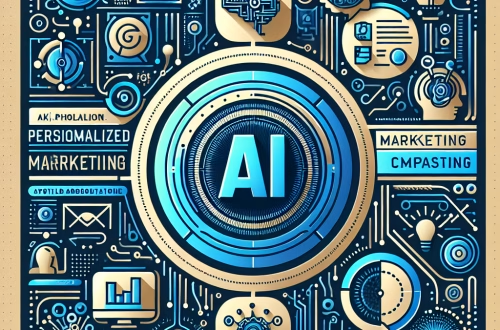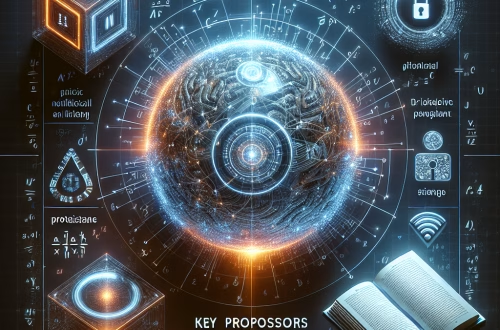Summary:
This article provides a detailed comparison between OpenAI’s GPT-4 and Anthropic’s Claude 3, two of the most advanced AI language models available today. We explore their strengths, weaknesses, and best use cases to help novices in the AI industry understand which model might be better suited for their needs. GPT-4 excels in creative tasks and broad knowledge applications, while Claude 3 is known for its safety-focused design and nuanced reasoning. Understanding these differences is crucial for businesses, developers, and AI enthusiasts looking to leverage these powerful tools effectively.
What This Means for You:
- Choosing the right AI for your needs: If you need creative content generation or broad knowledge applications, GPT-4 might be your best bet. For tasks requiring careful reasoning or safety considerations, Claude 3 could be more appropriate.
- Cost and accessibility considerations: Both models have different pricing structures and access methods. Research API costs and availability before committing to either platform.
- Future-proofing your AI strategy: Stay informed about updates to both models, as their capabilities are constantly evolving. Consider experimenting with both to understand their strengths firsthand.
- Future outlook or warning: As both models continue to evolve, we can expect increasing specialization in their capabilities. However, users should remain cautious about over-reliance on either model for critical decision-making without human oversight, as both can still produce errors or hallucinations.
GPT-4 vs Claude 3: Which AI Model Reigns Supreme?
Introduction to the Contenders
The AI landscape has become increasingly competitive with the emergence of powerful language models like OpenAI’s GPT-4 and Anthropic’s Claude 3. Both represent significant advancements in artificial intelligence, but they approach problems differently and excel in distinct areas. Understanding these differences is crucial for anyone looking to harness AI capabilities effectively.
Core Architecture Differences
GPT-4, developed by OpenAI, builds upon the transformer architecture that made its predecessors successful. It’s trained on an enormous dataset encompassing diverse internet text, giving it broad knowledge across numerous domains. Claude 3, developed by Anthropic, also uses transformer architecture but incorporates additional safety mechanisms and constitutional AI principles from the ground up.
Performance Comparison
Language Understanding and Generation
GPT-4 demonstrates exceptional fluency and creativity in language generation, often producing more engaging and varied text. Claude 3 tends to be more measured in its responses, prioritizing accuracy and safety over stylistic flair. In benchmark tests, GPT-4 typically scores higher on creative writing tasks, while Claude 3 performs better on tasks requiring careful reasoning and factual accuracy.
Reasoning and Problem-Solving
Both models show impressive reasoning capabilities, but their approaches differ. GPT-4 tends to be more speculative and willing to venture educated guesses, while Claude 3 is more cautious and likely to acknowledge uncertainty. This makes Claude 3 potentially better for analytical tasks where precision is crucial.
Specialized Capabilities
Creative Applications
For creative writing, marketing copy, or brainstorming sessions, GPT-4’s imaginative output often surpasses Claude 3. Its ability to generate varied stylistic outputs makes it popular among content creators.
Technical and Analytical Tasks
Claude 3 shines in technical domains, particularly in mathematics, coding, and logical reasoning. Its responses tend to be more structured and methodical, making it preferable for tasks requiring precision.
Safety and Ethical Considerations
Anthropic designed Claude 3 with safety as a core principle, implementing constitutional AI to minimize harmful outputs. GPT-4 also has safety measures but may be more prone to generating controversial or biased content in edge cases. For applications where safety is paramount, Claude 3’s design philosophy offers distinct advantages.
Practical Use Cases
Best Uses for GPT-4
- Creative content generation (stories, poems, marketing copy)
- Broad knowledge applications (general Q&A, explanations)
- Brainstorming and ideation sessions
- Entertainment applications (games, interactive fiction)
Best Uses for Claude 3
- Technical documentation and analysis
- Legal and compliance-related text processing
- Tasks requiring careful, nuanced reasoning
- Applications where safety and harm reduction are priorities
Limitations of Each Model
GPT-4 can sometimes produce factually incorrect information confidently (hallucinations) and may require more careful prompting to stay on task. Claude 3, while more restrained, might reject valid queries it deems potentially harmful and can be less creative in its outputs. Both models have knowledge cutoffs and don’t have real-time information access without additional tooling.
Integration and Accessibility
GPT-4 is widely accessible through ChatGPT Plus and the OpenAI API, with various third-party integrations available. Claude 3’s access is more limited but growing, with availability through Anthropic’s API and some partner platforms. Pricing structures differ, with both offering various tiers based on usage levels.
Future Developments
Both OpenAI and Anthropic continue to refine their models. We can expect GPT-4 to become more reliable and Claude 3 to expand its creative capabilities while maintaining its safety focus. The competition between these approaches benefits end-users through continuous improvements in AI capabilities.
People Also Ask About:
- Which model is better for coding assistance? Both models can assist with coding, but Claude 3 often provides more structured and methodical coding solutions, while GPT-4 might offer more creative approaches. For beginners, Claude 3’s explanations might be clearer, while experienced developers might appreciate GPT-4’s versatility.
- Can these models replace human writers? While both GPT-4 and Claude 3 can generate impressive text, they lack true understanding and human experience. They’re best used as writing assistants rather than replacements, particularly for nuanced or emotionally sensitive content.
- How do the models handle controversial topics? Claude 3 is generally more conservative in its approach to controversial subjects, often refusing to engage. GPT-4 might provide more detailed responses but could occasionally generate problematic content without careful prompting.
- Which model has better memory for long conversations? Both models have context window limitations, though recent versions have expanded these capabilities. Claude 3 is often praised for better handling of long, complex conversations, while GPT-4 might lose track of earlier points in very extended dialogues.
- Are there significant cost differences between the models? Pricing structures vary based on usage tiers and API access. Generally, costs are comparable for similar usage levels, but specific needs might make one more economical than the other for particular applications.
Expert Opinion:
The competition between GPT-4 and Claude 3 represents two important directions in AI development – one prioritizing capability and breadth, the other emphasizing safety and reliability. While GPT-4 currently leads in creative applications, Claude 3’s thoughtful architecture suggests important advancements in responsible AI. Users should consider their specific needs and risk tolerance when choosing between them. As both models evolve, we’re likely to see convergence in some areas while maintaining their distinctive approaches to AI safety and capability.
Extra Information:
- OpenAI’s GPT-4 Technical Report – Provides detailed technical information about GPT-4’s architecture and capabilities.
- Anthropic’s Claude 3 Announcement – Official information about Claude 3’s features and design philosophy.
- Constitutional AI Paper – Explains the safety-focused approach behind Claude models.
Related Key Terms:
- GPT-4 vs Claude 3 performance benchmarks
- Best AI language model for creative writing
- Claude 3 safety features explained
- GPT-4 technical capabilities overview
- Comparing AI model reasoning abilities
- Cost comparison GPT-4 Claude 3 API
- Future developments in large language models
Check out our AI Model Comparison Tool here: AI Model Comparison Tool
#GPT4 #Claude #Model #Reigns #Supreme
*Featured image provided by Pixabay





